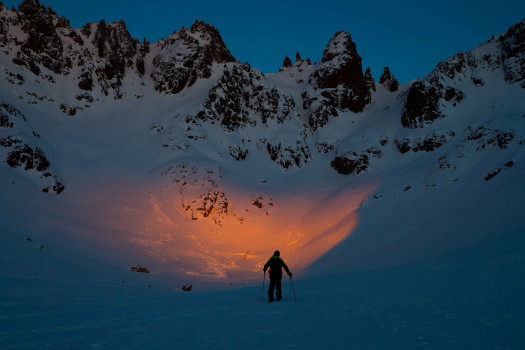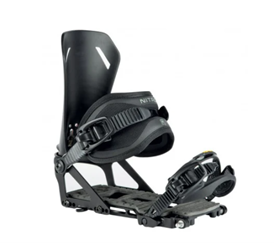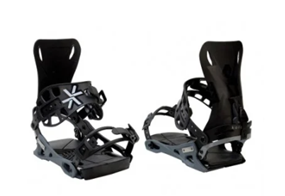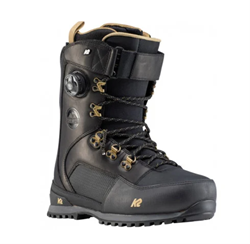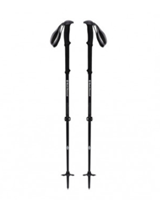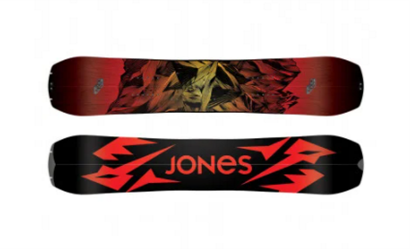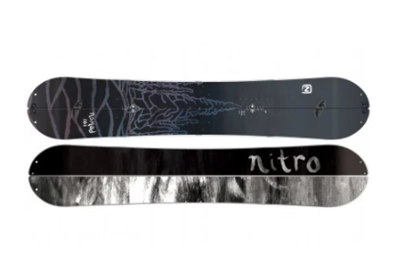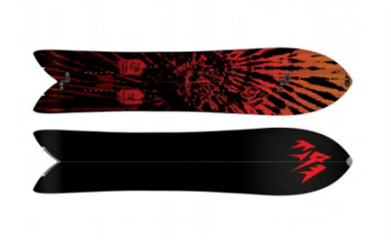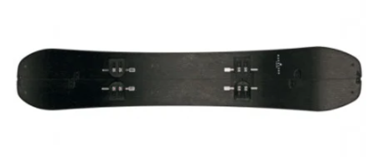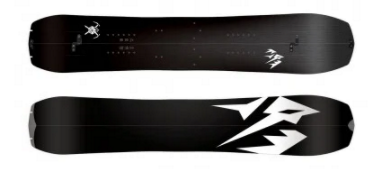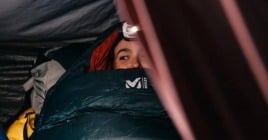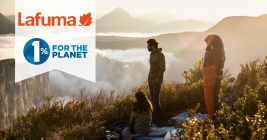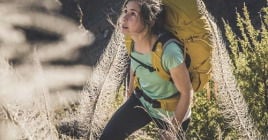Ski touring for snowboarders :

Nowadays, more and more people practice ski touring, a sport that used to be practiced by hard-core mountaineers with a great knowledge of the mountains. Today, this practice is becoming more and more popular with about 30% of skiers in France who say they do this type of winter activity.
The reasons for this increase or at least this new attraction to ski touring are multiple. The desire to practice one's favorite sport in a perspective of growing respect for the environment is in the air of time, to escape the world and the crowded chairlifts, or the prices of a stay in the mountains too expensive. The investment, although high at the beginning, remains however lower than the cumulation of accommodation / ski pass / ski equipment rental which is more and more expensive in our resorts.
However, the pleasure of discovering, through the effort, the perfection of a virgin snow field to descend and to find again this feeling of freedom that the mountain can offer remains nevertheless the first motivation of the ski tourers that you can cross around the summits.
But what about snowboarders? They can be considered as the pioneers of off-piste, freestyle and this freedom on the snow. How can you use a single spatula (board) to go back up the slopes and go in search of new horizons like skiers?
The solution has a name, a Splitboard! A snowboard that splits into several pieces to allow you to go up as if you were on a ski tour and come back down on a snowboard!
Less democratized and known than ski touring, this practice is seen more and more outside ski areas. Despite the late development of this type of equipment in the late 90's and early 2000 a large part of snowboard brands have been able to improve the use and develop new models of boards. Burton, Jones, K2, Nitro, Nidecker, Amplid and many other famous brands have entered this market to offer today products adapted to the needs and desires of riders!
What is a Splitboard?
As explained previously, splitboarding allows you to practice ski touring while snowboarding on the way down. To enable this to happen, there are several features you need to know about in order to understand how a splitboard works.
The board :
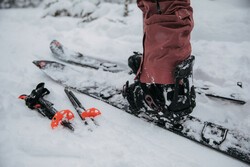
As its name indicates, the Splitboard is a snowboard split in 2 parts to create 2 skis and thus allow to go up the slopes in "ski touring" style. In addition to the outer quarters already present on a classic snowboard, the Splitboard also has inner quarters to allow a grip as effective as ski touring in steep slopes. The 2 boards are joined together with 2 hooks at the top and bottom during the descent to reshape the board.
The skins :
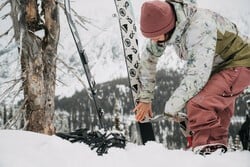
Once again, as in ski touring, the use of skins is necessary during the ascent. Cut in the shape of the 2 "skis" that make up the Split it allows a grip in the snow on the way up. Whether it's Mohair or Nylon skins or a mix of both like Peak skins nitro or Jones Nomad skins, the important thing in Splitboard is to ensure a good grip during the ascent, because the 2 tips are shorter and wider than a classic ski.
The Bindings :
The biggest innovations and differences with ski touring are in the binding system. On skis, most bindings are insert or disengageable where you simply put them on and adjust the system up or down.
In Splitboard, the systems are more complex due to the fact that there is only one sliding surface and therefore both feet attached to the board. Thus, it is necessary to have a classic snowboard grip perpendicular to the board for the descent and a parallel grip to allow the ski ascent. Two maneuvers are therefore necessary to switch from one grip to the other.
For this, there are four different systems of Splitboard bindings:
The "historical" system which revolutionized the use of the Splitboard is based on a "Voilé universal splitboard Interface". A system on which you can install different brands of bindings such as Burton x Spark or Nitro Vertical for example. This system has proven itself over the years, although a little heavy, it offers an easy assembly and rigidity tailored to the off-road. For this system, all you have to do is slide the mount into a rail and clip the mount, and in mounted mode, slide the inserts and fix them, leaving the back of the mount free for mounting.
The Karakoam System, mainly included in the Jones Splitboard packs, has a clip system at the back of the binding when placed on the base and a clip at the front for mounting. Quite easy to mount, light and closer to the board, this binding system is very effective in off-piste and more difficult snow conditions.
The Plum Brand System made in France is also a light metal system. The system is placed on the base and hooks on with a single side clip. In mounted mode, the clip is the same with a front hook.
Finally, one of the last binding systems is the Union system, unlike the other bindings, this one is made of plastic offering an interesting Flex for the snowboarders who like jumping and freestyle/backcountry. However, the binding is a little more complex in its installation with a rod to slide into the binding for ascent and descent.
All bindings have an ascent/descent mode on the spoiler at the back of the binding that allows the foot to be tilted for easy movement when climbing.
Also important to know, classic snowboard boots are compatible with all splitboard bindings although there are specific splitboard boots with higher stiffness, Vibram insoles and specific binding settings such as the K2 Aspect model.
The sticks :
As with ski touring, it is necessary to equip yourself with a pair of poles that will be useful on the way up. As you don't use poles when going downhill on a snowboard, it is advisable to equip yourself with telescopic or foldable 3-strand touring poles specially designed for touring so that you can put them in the bag more easily when going downhill.
Crampons and knives :
In addition to this equipment, crampons and knives can be useful when climbing in difficult snow conditions or very steep slopes. These tools provide a better grip to avoid falls and reach hard-to-reach places. Crampons attach to snowboard boots while knives attach to bindings in ascent mode.
The different types of boards :
As for classic snowboards, there are different shapes of split boards depending on the use you are looking for and the performance you want in uphill or/and downhill.
Most boards have an inverted camber which allows for better flotation in powder snow which makes sense considering the off-piste use of this type of product. Boards with normal and inverted camber offer more versatility and stiffness for committed snowboarders.
In addition, there are different types of materials and shapes that make up the board:
- The classic twin-type shape that allows for off-piste, backcountry or freestyle riding.
- The swallowtail shape is designed for mainly powder and off-piste use. Often lighter for easy climbing and wider for good flotation in powder.
- Or the combination of the lightness of carbon, the flotation of a powder board and the twin-type shape to offer a complete model that allows you to switch from one use to another on the same product.
Some brands even offer today models in 4 parts and not 2 parts to offer maximum lightness on the way up as well as a thinner and more manageable ski for conversions and steep slopes without removing the flotation of the snowboard on the way down.
Off-piste safety
Finally, an essential characteristic of the practice of Splitboard and which is common with ski touring is the safety in the mountains. As everywhere else outside the marked and secured ski areas, it is essential to have off-piste safety equipment. Thus, an avalanche victim detector, a shovel and a probe remain the obligatory equipment to always carry with you. A bag equipped with an airbag system can also be useful and safer for the most extreme off-piste practices.
Find all our range of Splitboard equipment on our website: Splitboard

